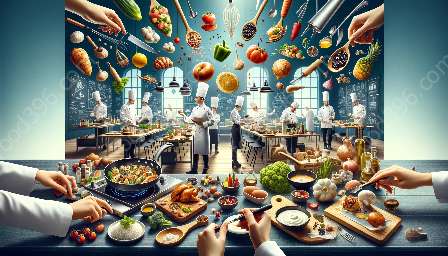Aromatics are a fundamental component of the flavor profile in various cuisines across the globe. They play a crucial role in enhancing the taste and aroma of dishes, elevating the overall culinary experience. Understanding the significance of aromatics in cooking is essential, as they contribute to the depth and complexity of flavors. Additionally, their compatibility with flavor profiles and seasoning, as well as their incorporation into culinary training, further highlights their importance in the culinary world.
The Role of Aromatics in Enhancing Dishes
Aromatics, such as onions, garlic, ginger, and herbs, are known for their ability to infuse dishes with distinct and vibrant flavors. Their unique aroma and taste have the power to transform ordinary ingredients into extraordinary culinary creations. When used in cooking, aromatics release essential oils, adding depth and complexity to the overall flavor profile of the dish. Whether they are sautéed, roasted, or used as a base for stocks and sauces, aromatics impart a captivating richness that enhances the dining experience.
Impact on Flavor Profiles and Seasoning
The incorporation of aromatics into dishes contributes to the development of diverse flavor profiles. When combined with various seasonings and spices, aromatics create a harmonious blend of tastes that stimulate the palate. For example, the combination of sautéed onions and garlic with cumin and coriander can create a warm and aromatic base for curries, while the addition of fresh herbs like basil and thyme can elevate the freshness of a dish. Understanding how aromatics interact with different flavor profiles and seasoning allows chefs to create well-balanced and flavorful meals that cater to a wide range of preferences.
Culinary Training and Aromatics
During culinary training, aspiring chefs learn the art of utilizing aromatics to enhance dishes. They gain knowledge about the properties of various aromatics, including how to properly prepare, cook, and combine them to achieve optimal flavor. Understanding the role of aromatics in cooking is a fundamental aspect of culinary education, as it lays the groundwork for creating exceptional culinary masterpieces. Through hands-on experience and guidance from seasoned chefs, trainees develop a deep appreciation for the transformative power of aromatics in the culinary world.
The Art of Aromatic Infusion
Aromatic infusion is a technique in which the flavors and aromas of herbs, spices, and other aromatics are extracted and incorporated into liquids, oils, or marinades. This process imparts a concentrated essence, infusing the base ingredient with a rich and fragrant taste. Aromatic infusions can be used to enhance soups, stews, sauces, and dressings, adding a layer of complexity and depth to the final dish. Through precise infusion methods, chefs can harness the full potential of aromatics, elevating the overall dining experience.
Capturing the Essence of Aromatics in Global CuisinesAromatics play a significant role in defining the flavor profiles of diverse global cuisines. In French cuisine, the mirepoix, a combination of diced onions, carrots, and celery, serves as a foundational aromatic base for numerous dishes, providing a sweet and savory undertone. Similarly, the holy trinity of Louisiana Creole and Cajun cuisine consisting of onions, bell peppers, and celery infuses dishes with a distinct southern flavor. Across Asia, the use of aromatics such as lemongrass, galangal, and kaffir lime leaves contributes to the bright and aromatic flavors found in Thai and Vietnamese dishes. Understanding the nuances of aromatics in global cuisines allows chefs to authentically capture the essence of each culinary tradition.
Exploring Aromatics in the Culinary World
As chefs and culinary enthusiasts continue to explore the potential of aromatics, innovative techniques and ingredient combinations emerge, expanding the possibilities of flavor enhancement. The utilization of aromatics goes beyond mere seasoning, inspiring a sensory journey that delights the taste buds and heightens the overall dining experience. From enhancing classic dishes to creating contemporary culinary masterpieces, the role of aromatics in the culinary world remains indispensable.
In conclusion, the incorporation of aromatics into cooking introduces a symphony of enticing flavors and aromas, showcasing the transformative power of these essential ingredients. Their compatibility with flavor profiles and seasoning, as well as their integral role in culinary training, underscores their significance in the culinary world. Through exploration and experimentation, chefs continuously push the boundaries of traditional culinary practices, allowing aromatics to shine as indispensable components in creating memorable and delectable dishes.
